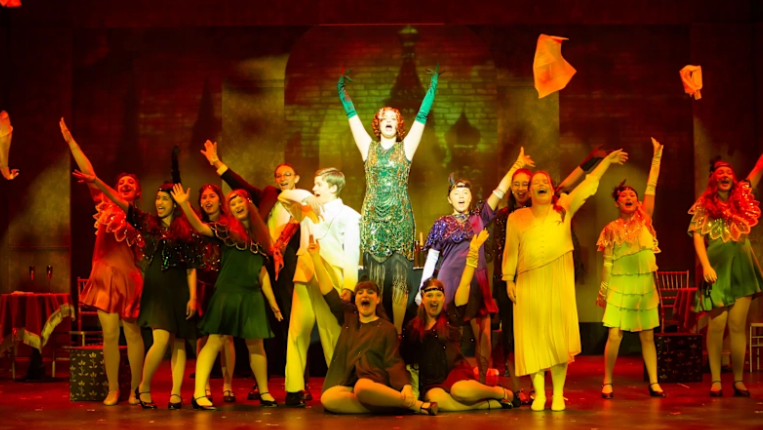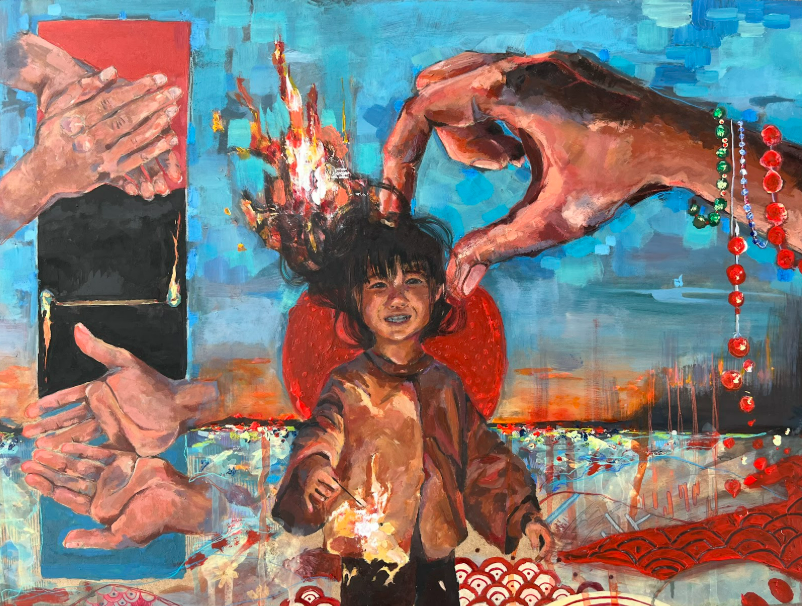Art as a Lens: How Creative Expressions Document and Preserve History
Art has always been more than self-expression: It is a medium for storytelling. Art can help us remember both information and emotions during a specific event. Through a variety of ways, art conveys history from multiple perspectives. History can be displayed through art pieces such as photographs, paintings, films, architecture, memorials, and more. Through the study of art inspired by history, we not only gain a greater understanding of historical events and figures, but also the emotions, triumphs, struggles, and values that shaped them.

Washington Crossing the Delaware is one of the most influential paintings commemorating the American Revolution. Created by German artist Emmanuel Leutze seventy-five years after America gained independence, the painting depicts George Washington standing tall in a small rowboat crammed with thirteen men. The American Revolution Institute says, “Their dress tells us that they are soldiers from many parts of America, and each has a story.” They represent a cross-section of Americans from diverse backgrounds who are fighting for freedom in unity. The two dominant figures in the painting are Washington and Lieutenant James Monroe, who is holding a flag. Leutze designed the painting to paint each figure as an individual but reminds us that they are all in the same boat, working towards a common goal. The painting portrays an icy river and a dark sky. Some of the men have tired expressions on their faces. However, Washington is looking straight ahead to the approaching land, symbolizing the resilience and determination of the American people.

Migrant Mother is a photograph taken by American photographer Dorothea Lange in 1936. Lange worked for a government program that documented the relief of farmers who had been detrimentally hit by the Great Depression. Many farmers were also affected by the Dust Bowl, a severe dust storm that destroyed millions of acres of farmland, mainly in the Great Plains. Many relocated to California, hoping for a better life. However, many were met with a lack of job opportunities, resulting in poverty. Lange was driving through Nipomo, California when she saw a sign that said “Pea Pickers Camp.” She felt compelled to stop, not knowing that this decision would change her life forever. The Migrant Mother told Lange that she was 32. She and her seven children were living off vegetables from surrounding fields and birds that the kids killed. They were living in a lean-to tent, and she had recently sold the tires off her car to buy food. The pea crop froze and there were no work opportunities for anyone. The photograph shows The Mother, surrounded by a few of her children, holding a baby with a dirty face limply in her arms. Lines are etched onto her forehead and creases of her eyes, with one hand lifted to her mouth in apprehension. Lange successfully captured the essence of what life was like for so many families who were caught on the wrong side of the depression, giving voice to those who faced immense hardship and poverty during these years of deprivation.

The Hall of Remembrance is located at the Holocaust Museum in Washington D.C. It is a solemn and powerful place dedicated to the six million Jews who were killed in the Holocaust at the hands of Hitler and the Nazi regime during WWII. The central feature of the memorial is the eternal flame which burns continuously, symbolizing the everlasting memory of the victims. Surrounding the flame are walls inscribed with the names of concentration camps, which are lined with candles that visitors can light. The architecture is minimalist, with the hall being composed mostly of stone. This contributes to a quiet, somber atmosphere of deep reflection. When walking through the museum, the Hall of Remembrance is typically the last exhibit. Behind the eternal flame is an inscription from the book of Deuteronomy which says, “Only guard yourself and guard your soul carefully, lest you forget the things your eyes saw, and lest these things depart your heart all the days of your life, and you shall make them known to your children, and to your children’s children.” This emphasizes the undying responsibility that the younger generations have inherited. They must share the events of the Holocaust so that the atrocities committed are never forgotten. Memorials like this encourage people to remember the horrors of the Holocaust and to ensure these actions are never repeated.

Lincoln (2012) is a film directed and produced by Steven Spielberg, with Daniel Day-Lewis starring as President Lincoln. It takes place in 1865, in the final months of President Lincoln’s life. The plot centers around his efforts to pass the 13th Amendment, which would result in abolishing slavery throughout the United States. The backdrop of the Civil War highlights Lincoln’s tactics, especially when working under pressure. He stays focused on his obligations as he works towards gaining enough votes from the House of Representatives to pass the amendment. Aside from the black-and-white factual information, the film also explores Lincoln’s relationship with his wife, Mary Todd Lincoln, and his son, Tad. The movie investigates not only his actions and achievements, but who he was as a person, and his persistence in the fight to end slavery.
Art can provide a lens into a deeper story of history, proving that one can learn about past events from not only just a textbook. Influential works of art such as Washington Crossing the Delaware, Migrant Mother, The Hall of Remembrance, and Lincoln are all pivotal representations that can help us honor the resilience and hardships faced by individuals throughout history and also celebrate their achievements. As we continue to engage with art inspired by history, we can gain a better understanding of the past, and how it shapes our life today.





